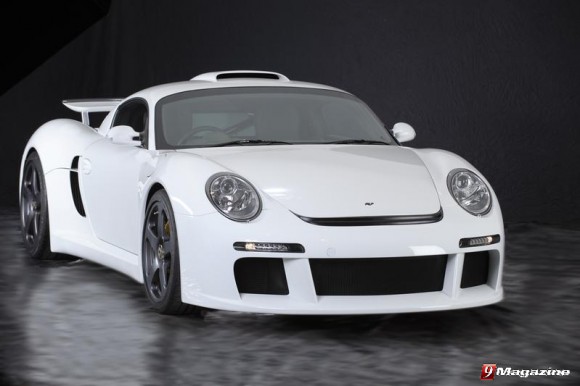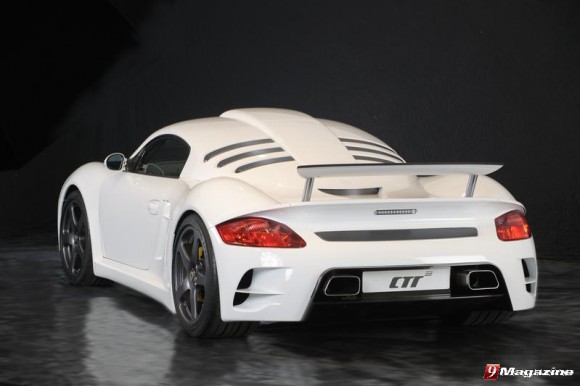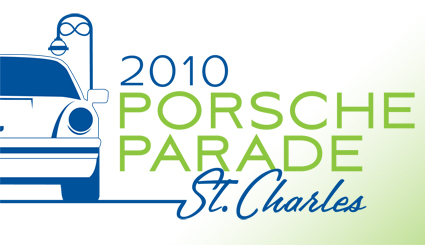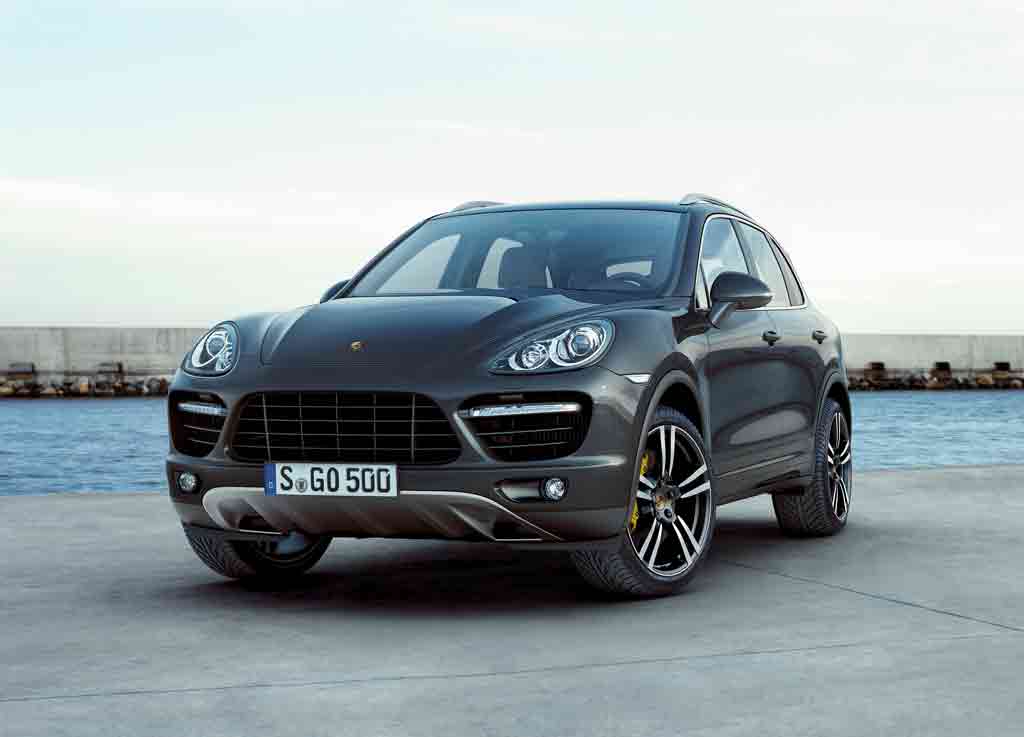 Exactly 20 years after the legendary CTR “Yellowbird” and 10 years after the second CTR, RUF announces the all-new CTR 3
Exactly 20 years after the legendary CTR “Yellowbird” and 10 years after the second CTR, RUF announces the all-new CTR 3
In April 2007, the CTR 3 was unveiled in Bahrain. While the first two CTR generations still had their engines in the rear, the new CTR 3 has a mid-engine design. However, one thing that the CTR 3 has in common with its two predecessors is that it is a pure driving machine. The CTR 3 is made to involve the driver in the driving experience.
The mid-engine design provides exceptional balance and agile handling, while the longer wheelbase provides better driving stability at high speeds. The body of the CTR 3 is a completely new development which is not based on any existing mid-engine concept. It is aerodynamically designed for high speed. Galvanized steel is used for the front structure and the passenger compartment. The engine and transmission are fixed in a space frame and modular tubular frame construction. The passenger compartment is protected by the latest version of the famous RUF Integrated Roll Cage which is integrated into the A pillar and tube frame. The doors, with integrated side impact protection beams, and the front hood are made of aluminum. The body-shell is made of Kevlar-carbon composite.
 The concept of this classic sportscar was maturing in Alois Ruf’s head for a long time. Together with his design and engineering team he now realized this idea. RUF has 30 years of experience with turbocharged boxer engines. The CTR 3’s twin-turbocharged 3.8 litre flat-six cylinder engine has an output of 750 HP at 7,100 rpm. The maximum torque is 708 ft/lbs at 4,000 rpm. This engine design combines a compact construction with high performance. Each turbocharger is provided with an intercooler which is placed in front of each rear wheel.
The concept of this classic sportscar was maturing in Alois Ruf’s head for a long time. Together with his design and engineering team he now realized this idea. RUF has 30 years of experience with turbocharged boxer engines. The CTR 3’s twin-turbocharged 3.8 litre flat-six cylinder engine has an output of 750 HP at 7,100 rpm. The maximum torque is 708 ft/lbs at 4,000 rpm. This engine design combines a compact construction with high performance. Each turbocharger is provided with an intercooler which is placed in front of each rear wheel.
The sequential shift 6-speed transmission in the CTR 3 is a new design and is transversely mounted. It can manage torque up to 855 ft/lbs. A shift indicator on the dashboard shows the gear in use. A limited slip differential is provided to maximize performance. The sport suspension is designed for high-level driving dynamics and safety. The front axles use MacPherson struts and an anti-roll bar. The rear axles utilize motorsport technology with horizontal coilover shock absorbers fixed over pushrods connected to the wheel carriers.
The brake system is designed to match the high engine and suspension performance. Both front and rear axles utilize 6-piston fixed light alloy calipers and ventilated, cross drilled ceramic composite discs. Each brake disc is 380 mm in diameter. A specially designed Bosch anti-lock braking system is standard.
The CTR 3 rolls on forged aluminum wheels with center lock. At the front 255/35 ZR 19” tires are mounted on 8.5” x 19” wheels, while at the rear 335/30 ZR 20” tires are mounted on 12.5” x 20” wheels.
The interior can be designed to the customer’s taste, from a functional lightweight finish to a sporty luxury finish with leather and Alcantara. The aluminum gearshift lever for the sequential shift transmission is a central unit to the interior. In addition, the 260 mph speedometer shows the driver that the CTR 3 is meant for high performance.
The lightweight construction allows for an empty weight (according to DIN) of 3,086 lbs. The result is a power-to-weight ratio of only 4.4 lbs per HP.
The CTR 3’s performance is incredible. Acceleration from 0 to 100 km/h (62 mph) takes only 3.2 seconds, and its maximum speed is 380 km/h (236 mph).
Power
552 kW (750 bhp)
at 7,100 rpm
max. Torque
960 Nm
at 4,000 rpm
Displacement
3,746 cm³
Performance
0-62 mph (0-100 kph) in 3.2 seconds
0-125 mph (0-200 kph) in 9.6 seconds
Top speed
236 mph (380 kph) – dependent on the gear ratios
Fuel consumption:
urban (l) 20,0
non-urban (l) 9,9
combined (l) 13,5
CO 2 emissions (g/kg) 311
Source: Ruf



